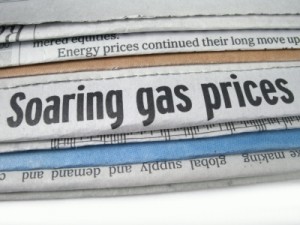 Many of us are trying to find ways to make our budgets compensate for the increased price of gas. With prices increasing across the board (grocery, services, etc.) this leaves us with no extra money for these inflated gas prices.
Many of us are trying to find ways to make our budgets compensate for the increased price of gas. With prices increasing across the board (grocery, services, etc.) this leaves us with no extra money for these inflated gas prices.
By changing a few of your driving habits you can make the most of your gas investment. These 10 simple tips are guaranteed to help you save money so you can use it for other budgetary needs.
1. Avoid rapid start and stops. Gentle acceleration and smooth braking, especially around corners, can save $1 per gallon, according to the Environmental Protection Agency (EPA), improving fuel economy by up to 33%.
2. Keep on rolling. Slow-and-go is always better than stop-and-go, because maintaining a constant speed in congestion increases fuel economy; it can take 20% more fuel to accelerate from a full stop than from 5 miles per hour. Anticipate stop and coast when possible.
3. Ride the “green wave.” Traffic lights are often synchronized so that a motorist driving at a specific speed will pass through many without needing to stop, delivering better fuel efficiency.
4. Limit air conditioning. This is a hard one for me, but can reduce mileage by as much as 20%. When driving below 40 mph, closing windows and using A/C is better because it avoids aerodynamic drag on the vehicle. Also use the “recycle inside air” feature to capitalize on already cooled air.
5. Maintain Optimum highway speed. The EPA estimates that in highway driving, every 5 miles over 60 mph is equivalent to paying 20 cents per gallon extra for gas. Staying below 60 mph can improve gas mileage by 7-23%.
6. Use cruise control. Tests conducted by Edmunds.com found that using cruise control to maintain a steady speed during flat highway driving can provide an average of 7% in fuel savings (less in hilly terrain).
7. Navigate to reduce carbon dioxide. Planning trips, including errands, saves time and increases motor vehicle efficiency. Electronic navigation helps find the shortest route to an unknown destination.
8. Avoid idling, even to warm up the engine. According to the Environmental Defense Fund, automobiles may burn 20-70% of a gallon for every hour spent in curbside idling (the equivalent to 0 mph). For trucks, it’s a full gallon. Unless quickly dropping off or picking up someone, turn the engine off when waiting for more than 10 seconds. It won’t harm the starter.
9. Keep your cool. The interior of a vehicle can reach 120 – 130 degrees F in 10 minutes in summer. Use a heat reflector or window shades to shield the interior from UV rays. Always roll down the windows to release hot air. It’s best to park in a garage or available shade.
10. Obey the check engine light. Today’s sophisticated on board diagnostics systems continually monitor vehicle operations. When the alert light comes on, it may indicate that emission have increases and fuel economy is going down, so always check it out.
Source: EcoDrivingUSA
